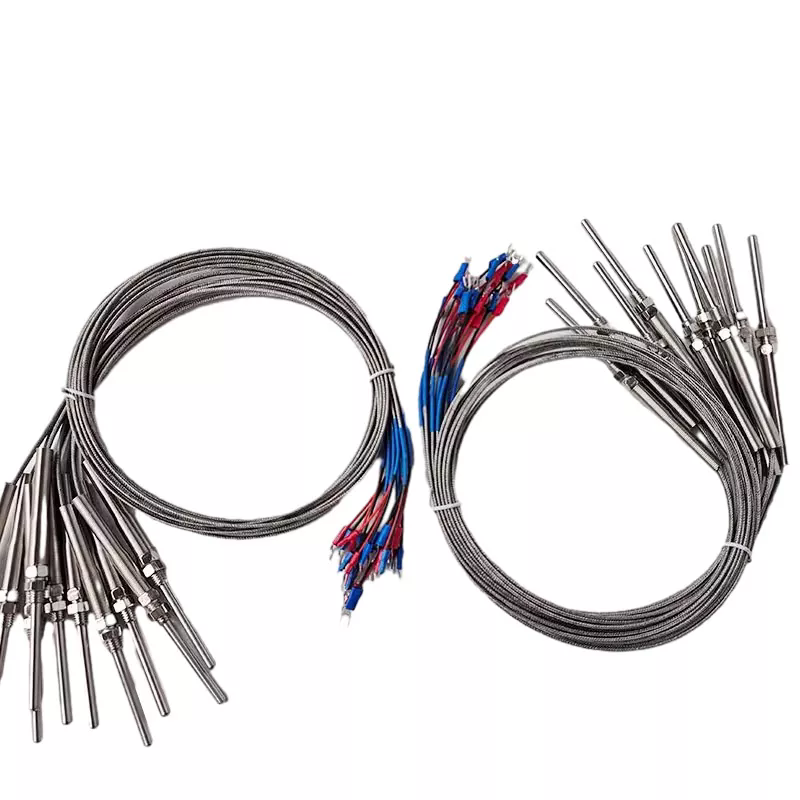Temperature Sensing Lines: The Essential Component for Accurate Temperature Monitoring
2024-12-04
Temperature sensing lines are an integral part of many industries and applications, ensuring accurate and reliable temperature measurement. From HVAC systems to industrial machinery and medical devices, temperature sensing lines play a crucial role in maintaining optimal performance, safety, and efficiency. In this blog, we will explore what temperature sensing lines are, how they work, their applications, and the benefits they bring to various fields.
What is a Temperature Sensing Line?
A temperature sensing line is a cable or wire designed to connect temperature sensors to control systems or monitoring devices. These lines house the sensing elements, such as thermocouples, RTDs (resistance temperature detectors), or thermistors, which detect temperature changes in the surrounding environment. Once a temperature change is sensed, the signal is transmitted through the line to a control system or digital display, allowing for real-time temperature monitoring and regulation.
How Do Temperature Sensing Lines Work?
1. Sensing Element
The sensing element (thermocouple, RTD, or thermistor) is the part of the line that responds to temperature fluctuations. Each of these elements operates differently, but all generate a change in resistance or voltage that is proportional to the temperature.
2. Signal Transmission
The temperature-sensitive element is connected to a wiring line that carries the electrical signal to a temperature monitoring device, such as a digital controller or a PLC (programmable logic controller).
3. Temperature Measurement
As the temperature changes, the sensor within the sensing line reacts, adjusting its resistance or voltage, which is then translated into an accurate temperature reading by the monitoring device.
4. Output and Action
The control system processes this information, triggering actions such as activating heating or cooling elements, issuing alarms, or adjusting system parameters to maintain the desired temperature.
Types of Temperature Sensing Lines
1. Thermocouple Sensing Lines
Thermocouples are widely used in temperature sensing due to their wide temperature range and fast response. These sensing lines are made from two different metal wires joined at one end, and they generate a voltage when subjected to temperature changes.
2. RTD Sensing Lines
RTDs use the principle of resistance change with temperature. Made of pure metals like platinum, these lines are known for their high accuracy and stability, often used in industrial and laboratory applications.
3. Thermistor Sensing Lines
Thermistors are temperature-dependent resistors, often used in applications that require precision within a limited temperature range. These sensing lines provide rapid response times and are cost-effective for many applications.
4. Fiber Optic Sensing Lines
For high-precision and long-distance measurements, fiber optic temperature sensors can be used. These lines are immune to electromagnetic interference and can operate in harsh environments like high-voltage or explosive settings.
Applications of Temperature Sensing Lines
1. Industrial Automation
Temperature sensing lines are crucial for controlling processes in industries such as manufacturing, petrochemicals, and power generation. They monitor the temperature of machinery, furnaces, and reactors to ensure smooth and safe operations.
2. HVAC Systems
In heating, ventilation, and air conditioning systems, temperature sensing lines help maintain indoor climate control by providing real-time data for efficient heating or cooling adjustments.
3. Food and Beverage Industry
Temperature plays a critical role in food safety and processing. Temperature sensing lines are used in ovens, refrigerators, and cooking equipment to ensure compliance with safety standards and quality control.
4. Medical Devices
Medical applications, such as incubators, sterilizers, and temperature-controlled storage units, rely on precise temperature sensing to maintain the safety and efficacy of medical supplies and equipment.
5. Automotive Industry
Temperature sensing lines are also found in automotive systems, such as engine management and climate control, to optimize performance and reduce wear on engine components.
Benefits of Using Temperature Sensing Lines
1. Accuracy
Temperature sensing lines, particularly those with RTDs and thermocouples, offer high precision, making them ideal for applications that demand strict temperature control.
2. Durability
Temperature sensing lines are designed to withstand harsh environments, including high temperatures, moisture, and chemicals, ensuring reliable performance over time.
3. Cost-Effectiveness
Depending on the application, thermocouple or thermistor-based sensing lines offer a cost-effective solution without compromising on quality or performance.
4. Flexibility and Versatility
Temperature sensing lines can be customized to fit specific needs, whether it's for high-precision laboratory work or rugged industrial use.
5. Remote Monitoring and Control
Many temperature sensing systems are integrated with remote monitoring and control capabilities, allowing operators to check and adjust temperature settings from a distance.
Conclusion
Temperature sensing lines are indispensable in maintaining efficient, safe, and reliable operations across various industries. Whether you're monitoring industrial processes, controlling HVAC systems, or ensuring the safety of medical equipment, these sensing lines provide real-time temperature data essential for decision-making and system control.
As technology continues to evolve, temperature sensing lines will become even more advanced, offering higher accuracy, faster response times, and better durability. For anyone working with temperature-sensitive processes, understanding and investing in the right temperature sensing lines will ensure optimal performance and safety.



